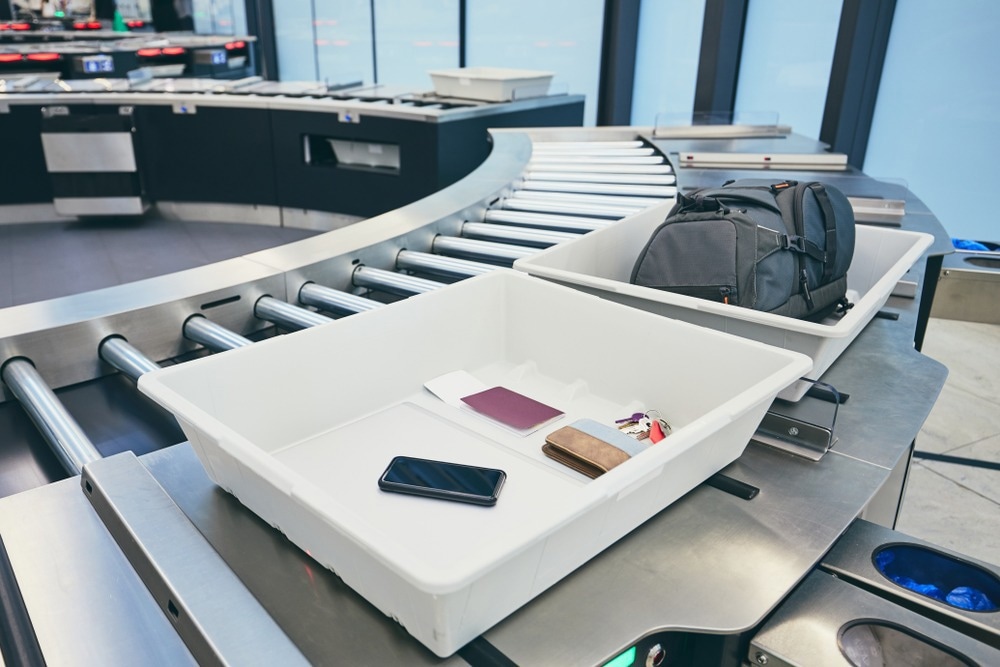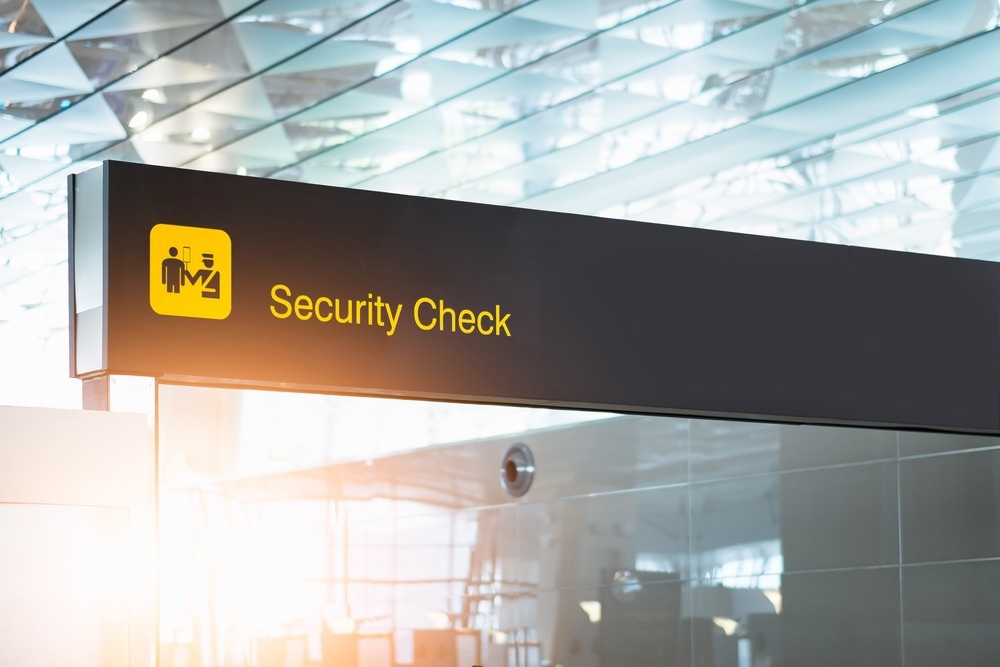In 2023, airports around the UK are planning to remove hand baggage limitations and reduce steps in the screening procedure to create a smoother and faster security procedure for passengers. They will achieve this by integrating computed tomography (CT) scan technology with airport security screening.

Image Credit: Jaromir Chalabala/Shutterstock.com
Ireland’s Shannon Airport was the pioneer of the new method, installing a USD 2.7 million CT scanning system to end the 100 ml liquid limit for hand luggage in March 2022. In December 2022, the UK government announced a June 2024 deadline for UK airports to upgrade to the latest generation of security screening technology.
New technology must be deployed in order to reduce hand luggage limitations and improve the security process for passengers. The new guidance will increase the 100 ml limit on liquids to 2 l, as well as remove separate checks for laptops and large electronic devices.
CT scans will create 3D images of passengers’ hand luggage. The technology will be deployed gradually around UK airports, with London City Airport going first this spring, 2023. Other major UK airports, such as Manchester Airport, are in the late stages of their implementation processes now, according to British news reports.
The UK’s busiest airport, Heathrow in London, trialed CT scanning for security screening in 2018, along with Schiphol in Amsterdam and John F. Kennedy in New York City. Trials lasted between six and 12 months.
How Do Airport Security CT Scans Work?
This new generation of airport security scanners uses computer tomography (CT) technology to generate detailed 3D models of the inside of passengers’ hand luggage.
Airport CT scans follow essentially the same process as hospital CT scans, which have been in wide use for decades. X-rays are applied to scan a series of 2D layers, which are reassembled in a computer to produce a 3D digital representation.
Cabin baggage CT scanners use a spinning gantry to capture hundreds of 2D X-ray images of items passing the scanning area on a conveyor belt. These images are put together automatically to create a 3D model.
The scanner captures a 2D image for every 0.5 degrees of rotation or 720 images for each full rotation. A reconstruction algorithm takes this image data and calculates the dimensions of a 3D model that accurately represents the contents of the luggage.

Image Credit: Thaspol Sangsee/Shutterstock.com
Airport security staff use a computer monitor to inspect 3D images and can turn and rotate them to look at items from different angles. Passengers do not have to remove electronic devices like laptops or large cameras from their luggage because all the items in the bag can be inspected from different angles with one CT-generated 3D image. This includes liquids up to 2 l, meaning there is an end coming to the 100 ml liquid limitation that has been in place since 2006.
The airport security CT scanners being deployed today can create 3D images of 1,000 carry-on bags an hour, drastically improving an often significant bottleneck in the passenger experience of boarding a plane.
Advancing CT Technology from the Hold to the Cabin
Airports have already been deploying CT scanning technology to analyze luggage since the early 2000s, but this has been for checked, hold luggage rather than hand luggage.
However, the machines used for this were too slow and cumbersome to be deployed in passenger security screening. Computing power was also insufficient to process images quickly and reliably. In the last five years, these challenges have been overcome through focused research and development.
Refreshing CT Algorithms for Aviation
In 2018, Boston University researchers writing in the CT scanning journal ADIX highlighted a need to completely redesign CT image generating and analysis algorithms.
The scientists identified a problem with the state of affairs for CT scanning: image formation algorithms were designed independently of object recognition algorithms and joined together.
The paper introduced a new class of combined algorithms that could process X-ray image data by forming 2D and 3D images at the same time as identifying different materials present in them.
As well as providing information to the analysis algorithm and security workers about items’ materials, this also provided more data to enable more accurate CT scanning and image reconstruction in the computer.
The new algorithms were evaluated with multi-spectral CT on simulated phantoms (computer-generated data) and compared with alternative state-of-the-art approaches for CT image analysis. The team found that designing image formation and item identification algorithms together led to significant improvements in performance.
It is not only developments in CT algorithms that are making the technology suddenly applicable and economical in non-medical contexts such as aviation security. Hardware advances such as extreme multidetector CT, dual-energy CT, and portable CT are improving the scope and widespread viability of CT scanning, while technology developments like cone-beam CT and phase-contrast CT are expanding their range of uses significantly.
More from AZoM: Papertronics: Disposable Electronics on a Single Sheet of Paper
References and Further Reading
Babaheidarian, P., and D.A. Castañón (2018). Joint reconstruction and material classification in spectral CT. ADIX. doi.org/10.1117/12.2309663.
Burgess, M. (2018). Heathrow's tech trial puts an end to you taking liquids out your bag. [Online] Wired. Available at: https://www.wired.co.uk/article/baggage-scan-airport-security (Accessed on 20 March 2023).
Clarke, L. (2023). Major airport scraps hand luggage rule for holidaymakers with Manchester set to follow. [Online] Manchester Evening News. Available at: https://www.manchestereveningnews.co.uk/news/greater-manchester-news/major-airport-scraps-hand-luggage-26423521 (Accessed on 20 March 2023).
Ginat, D.T., and R. Gupta (2014). Advances in Computed Tomography Imaging Technology. Annual Review of Biomedical Engineering. doi.org/10.1146/annurev-bioeng-121813-113601.
Russell, M. (2022). How Next Generation Airport Scanners Are Ending The 100ml Liquid Rule. [Online] Simple Flying. Available at: https://simpleflying.com/airport-scanners-ending-100ml-liquid-rule/ (Accessed on 20 March 2023).
Disclaimer: The views expressed here are those of the author expressed in their private capacity and do not necessarily represent the views of AZoM.com Limited T/A AZoNetwork the owner and operator of this website. This disclaimer forms part of the Terms and conditions of use of this website.